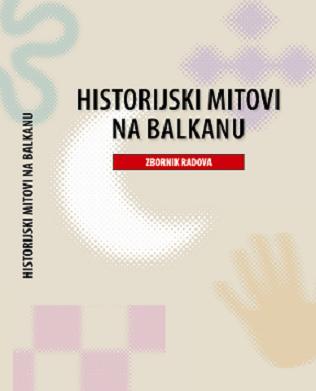
Historijski mitovi na Balkanu
With contribution by Srećko M. Džaja, Husnija Kamberović, Jon Kvaerne, Ivo Godlstein Damir Agičić, Ivo Žanić, Vjekoslav Perica, Bojan Aleksovm Ana Antić, Ulf Brunnbauer
More...We kindly inform you that, as long as the subject affiliation of our 300.000+ articles is in progress, you might get unsufficient or no results on your third level or second level search. In this case, please broaden your search criteria.

With contribution by Srećko M. Džaja, Husnija Kamberović, Jon Kvaerne, Ivo Godlstein Damir Agičić, Ivo Žanić, Vjekoslav Perica, Bojan Aleksovm Ana Antić, Ulf Brunnbauer
More...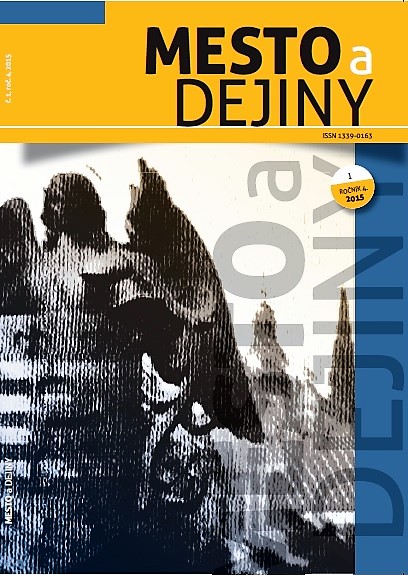
The paper deals with complex problems in addressing the adverse housing situation of the Roma population in Košice. After World War II, part of the city known as the gypsy camp under Moldavská way found itself in an extremely exposed position at the entrance to the city. Arrival the amount of working class from rural areas with extensive construction and urbanization ratios further deepen. Numerous Roma growth was evident. Housing problems are addressed through an allocation of older apartments, phasing out the huts in the camp and fi nally focusing on specifi c Roma settlement. The idea of a separate settlement originated in the mid-60s, in 1970, the planned housing units was not built. Another intention of anticipated settlement was in the area Myslava with lower standard family houses. Because of the high costs the concept of prefabricated houses gallery type was born. The government in 1976 refused to deal with Roma housing in specifi c neighbourhoods. Council city national committee nevertheless approved the construction of Luník IX without a specifi c focus. The construction was carried out in late 1970s, several policies were processed recall procedure Roma families from the camp as well as the old city, according to various streets. In 1981 began the history of Luník IX, its ethnic ghettoization with disastrous consequences to the present.
More...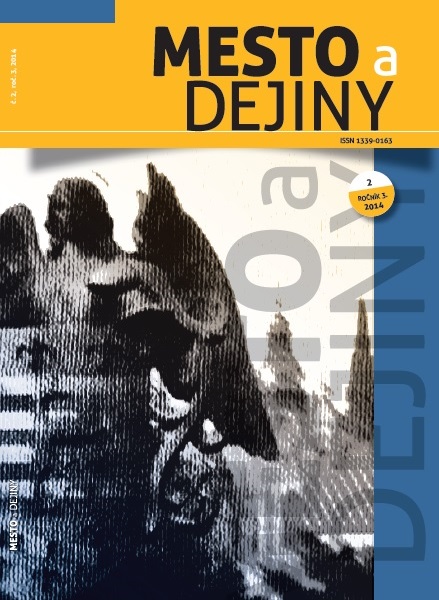
The tradition of motor sport in Slovakia is not rooted so deeply as in the Czech lands, or west European states, where it was developed since the turn of 19th and 20th century. This expensive and marginal activity at the beginning started to grow through the organized motoring associations, which were based in Slovakia during the 1920s and 1930s. In Slovakia didn’t exist stable speedway in this period and the races were organized on public roads, what required the cooperation of the districts’ structures and security forces. This kind of races were more attractive and it made them accessible to a wider circle of audience. From the slowly beginnings in the first half of the 1920s a solid base of sports motoring has been formed, subsequently extended its activities range from small club trips to events such as: Competition reliability,„Star-driving“, Speed races or Competition of elegance. This positive trend, however, was temporarily dampened by the impact of the global economic crisis, which also closed the pioneering stage of development of motor sport in Slovakia. This paper aims to capture the character of a relatively dynamic growth of modern sport activity in its pioneering stage in Slovakia.
More...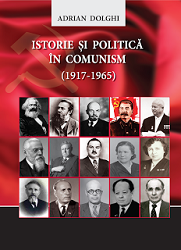
Interaction between politics and history as science and object of study occurred within the Soviet Union totalitarian communist regime. It affected the education and research systems, which were subordinate to the interests of the Communist Party and those of the Soviet state. History as a process, science and object of study was a continuous subject of the totalitarian state politics, while serving as an instrument of sovietisation policy and establishment of a new man and a new society. The policy of the Soviet state in higher education in the field of history was part of the sovietisation process and implantation of the communist ideology, initiated in Soviet Russia after the coup of 1917 and which continued during the USSR after its creation in 1922, and all territories included afterwards. The policy of the Soviet state in the higher education in the field of history represented the interaction between the political factor (the state with all its central and local institutions, Party organizations and staff at all levels, and state officials) and history (higher education and research institutions in the field of history, the educational, learning and research process, and scientists – historians)
More...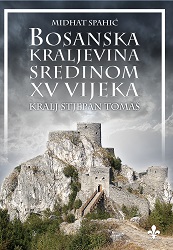
Bosnian King Stephen Thomas ruled for almost eighteen years, from 1443 until 1461. While his predecessors had been replaced by Bosnian noblemen, Thomas remained on the throne until the end of his life. The period of his reign was very turbulent, especially the beginning and the end of the reign, and it was marked by conflicts with Ottomans, Stephen Vukcic Kosaca and Serbian Despotate. The way of the succession of the throne in Medieval Bosnia has not been completely revealed. The preserved sources lead to the conclusion that there was no principle of throne inheriting in the Medieval Bosnia. Therefore, with great certainty we can assume that the dignity of being a ruler was a matter of election. The act of election and coronation was under the competence of Medieval Bosnia parliament. The leading Bosnian noblemen had the decisive role in the election of a ruler. The case of Thomas’ coronation was particularly interesting, bringing us the new details on that act, because besides the old Bosnian crown he wanted to be crowned with the new on by the Pope. Namely, the word is about the new crown the Pope Eugen IV prepared for King Thomas as a gratitude for conversion into Catholicism. However, King Thomas was opposed by Bosnian noblemen who had still been devoted to Bosnian Church. The noblemen stopped Thomas to be crowned with the new crown sent by the Pope, because that crown represented the symbol of religious and political reform that was to be implemented in Bosnia. Thomas was aware of the fact that the crowning with the new crown could put the peace in the country and his position of the ruler in danger, so he was forced to abandon such coronation.
More...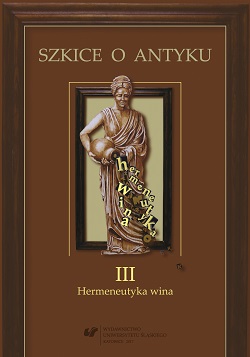
In the third volume of Essays on Antiquity, entitled The Hermeneutics of Wine, we focus our attention on the incessant presence of wine in the Mediterranean culture. In individual articles contained in the present publication, we discuss various aspects of wine and their relation to a specific place and time. The articles are interdisciplinary and they contribute to the reflection upon wine as the phenomenon that is more complex than literature. The Hermeneutics of Wine is at the same time a token of respect and sympathy for Professor Marian Szarmach and an expression of gratitude for his generosity that we experience in the Department of Classical Studies at the University of Silesia in Katowice, and elsewhere too.
More...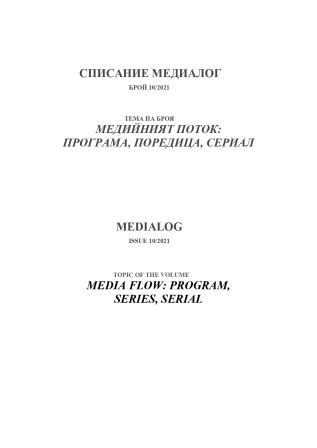
The text presents the main conclusions based on the study of the political messages in the Turkish series broadcasted on Bulgarian television and on Netflix. The main political messages in the series, showed on Bulgarian television, are the responsibility for decisions, connect with the life of a woman and a child. Among the important political topics are: migration, education abroad and returning home, conflicts between rich and poor.
More...
The purpose of the research is to outline the specifics of Bulgarian gardeners and Bulgarian horticulture in Budapest in the first quarter of the 21 century by means of two examples.Methods of observation, biographical approach, and free and semi-structured interviews are applied. The relationship between Bulgarian horticulture and cultural heritage is analyzed.The study is the result of the author’s participation in a project “Migrations. Modernities, and Intercultural Mediation – Bulgarian Immigrant Groups to Hungary in late 19th and early 20th c. and their Impact on the Social and Cultural Life of the Host Society”.
More...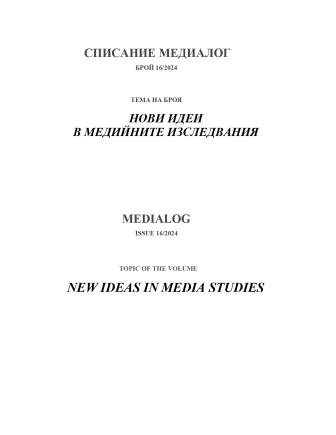
44 scientists participated in the International Scientific Conference dedicated to Prof. Ivaylo Dichev, on the topic: Pop-culture, Pop-politics: The Digital Turn. Interdisciplinary Analyses Of The Intersectionality Between Media, Cultures And Politics. The conference concludes the research project "Pop-culture, pop-politics: The digital turn. Interdisciplinary analyses of the intersection between media, cultures and politics" of the Sofia University. The conference was implemented with the help of the Cultural Studies Network, the journal "Seminar_BG", the Department of "Radio and Television" of the Faculty of Journalism and Mass Communication, and the Department of "History and Theory of Culture" at the Faculty of Philosophy, together with scientists from the Institute of Philosophy and Sociology of the Bulgarian Academy of Sciences.
More...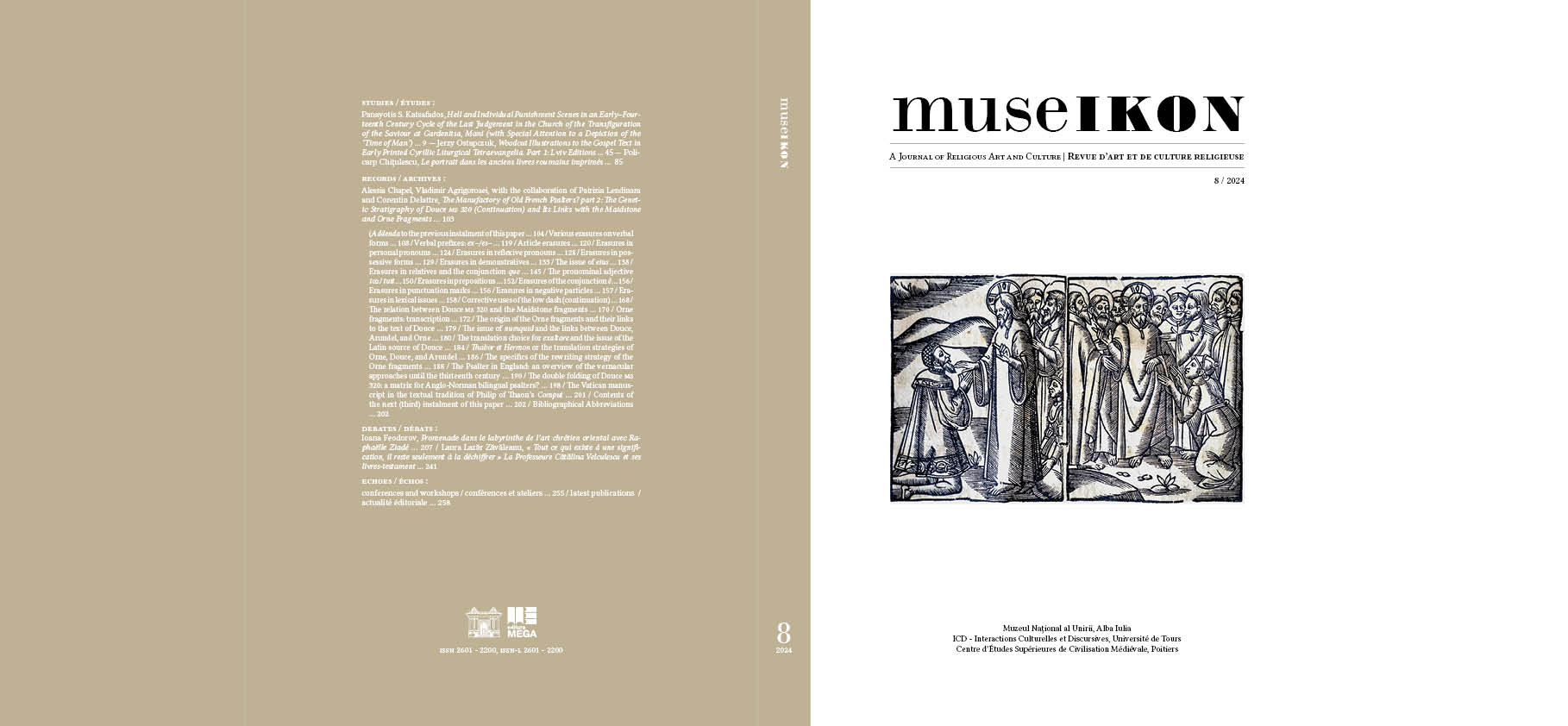
L’une des plus curieuses représentations du cycle du Jugement dernier de la péninsule de Mani (La-conie) peut être admirée dans le narthex de l’église de la Transfiguration, dans le village de Gardenitsa. Les représentations des pécheurs ont été initialement attribuées à un artiste du xviiie siècle, mais des travaux de restauration récents ont remis en question l’ancienne datation en faveur du xve siècle. L’Auteur montre, grâce à une analyse paléographique, que les caractéristiques des lettres et un certain nombre de particularités stylistiques peuvent être attribuées à un peintre local, Nomikos, dont l’oeuvre comprend d’autres églises peintes dans la région au début du xive siècle : l’église Saint-Georges à Marasse / Kitta, l’église Saint-Nicolas à Nymphi et le catholicon du monastère de Phaneromeni. Les peintures et les inscriptions de Gardenitsa pourraient être datées d’environ 1326/1327 et elles seraient, peut-être, parmi les dernières créations du peintre Nomikos. Contrairement aux châtiments individuels de pécheurs tels qu’on les connaît dans les peintures crétoises, chypriotes ou même serbes, le cycle peint sur la voûte ouest de l’église de Gardenitsa présente quelques traits qui le particularisent. Dans les huit cadres, regroupés en deux groupes de quatre sur les côtés nord et sud de la voûte, l’accent est sou-vent mis sur le clergé et les personnes qui lui sont liées (les femmes des prêtres, par exemple). Il n’y a pas de péchés de nature agricole ou familiale, et l’une des scènes représente un personnage mystérieux, ac-compagné d’une inscription qui se réfère au ‘Temps de l’homme’. C’est d’ailleurs la seule représentation d’un pé-cheur à Gardenitsa qui ne trouve pas de terme de comparaison dans les cycles de pécheurs d’autres régions du Commonwealth byzantin. L'auteur identifie un certain nombre de modèles qui semblent avoir fusionné pour créer une représentation entièrement nouvelle. Le premier est certainement la parabole du mauvais riche et de Lazare, dont la place est souvent parmi les scènes accompagnant le Jugement dernier, sauf que le riche représenté à Gardenitsa ne conserve que certaines caractéristiques iconographiques de la scène attendue. Une autre image qui semble avoir été utilisée dans la scène de Gardenitsa peut être celle de l’homme poursuivi par une licorne dans une parabole de l’histoire de Barlaam et Josaphat. L’arbre sur lequel s’appuie le riche de Gardenitsa et les deux chiens noir et blanc (au lieu des souris), symbolisant le jour et la nuit, sont des éléments qui semblent avoir été repris de cet autre modèle. Le troisième modèle pourrait être une série d’images que l’on retrouve dans des psautiers occidentaux. Après un inventaire succinct d’autres représentations occidentalisantes retrouvées dans la péninsule de Mani ou dans le reste du Péloponnèse, l’auteur conclut que les modèles fusionnés par l’artiste de Gardenitsa proviennent de manuscrits. Il pourrait s’agir des mêmes manuscrits que le donateur (aujourd’hui anonyme) semble offrir au Christ dans la scène votive. On suppose que ce fondateur est peut-être à l’origine des innovations iconographiques en question.
More...
Le présent article se concentre sur les cycles d'images narratives de l'Évangile, présents dans les premiers Tétraévangiles liturgiques imprimés en cyrillique et publiés à Lviv. Les sept éditions des Évangiles publiées par l'imprimerie de la Confrérie de Lviv, ainsi que celle publiée par Mykhailo Slozka, comportent de nombreuses illustrations narratives placées en lien direct avec les versets qui décrivent les scènes représentées. Une étude approfondie de ces cycles évangéliques d'images narratives, ainsi que les changements que les illustrations ont subis dans chaque édition, nous permettent de classer les modèles de représentation en trois groupes, et de diviser les huit Tétraévangiles de Lviv en deux groupes. Deux annexes présentent toutes les images narratives gravées sur bois dans les éditions des Évangiles de Lviv. Le premier appendice contient des représentations d'événements évangéliques dans les Tétraévangiles de Lviv, tandis que le deuxième appendice présente les illustrations narratives de l'édition de Mykhailo Slozka.
More...
The painted, engraved, or sculpted portrait is an attempt to immortalize a person and preserve their memory. Often, portraits served both didactic and aesthetic purposes, particularly in religious texts. In Orthodox books, portraits typically depicted saints rather than individuals contemporary with the time of the book's publication. It is exceedingly rare for an Orthodox book to include the portrait of a person who was alive at the time of publication or who had passed away relatively close to that date. While the practice of including portraits of individuals associated with a book was common in the West, it is a notable exception in the history of Romanian engraving and printing tradition. In this study, we have sought to identify the individuals and volumes printed in the Romanian Lands up to the nineteenth century in which such portraits appeared. We have also examined the motivations behind the inclusion of these portraits, whether engraved in wood or brass. This research was inspired by the portraits of Elder Paisios of Neamţ († 1794), printed in books by his disciples. We will analyze these representations of the great hesychast and then explore several other portraits we have identified in Romanian books thus far.
More...
Le présent article s’inscrit dans la continuité de celui qui a été publié en 2023 dans la même revue (The Manufactory of Old French Psalters: Part 1…). Ce deuxième volet comprend d’abord une section de addenda qui complètent certaines parties du précèdent article. S’ajoutent ensuite les érasures dans diverses formes verbales, suivies par un recensement des corrections liées aux préfixes ex– et es–. D’autres séries d’érasures concernent différentes parties du discours: articles définis; pronoms personnels; pronoms réflexifs; formes possessives; démonstratifs; avec une étude de cas sur les choix de traduction du génitif eius, dont plusieurs documentent l’existence d’un antigraphe. Il s’agit souvent d’une hésitation entre les formes faibles et fortes. Des sections com-plémentaires sont consacrées aux érasures des pronoms relatifs et de la conjonction que; à l’adjectif pronominal toz / tuit; aux prépositions; à la conjonction é; aux signes de ponctuation; et aux particules négatives. L’ana-lyse des érasures du manuscrit d’Oxford, Bibliothèque bodléienne, Douce 320 se termine par un examen détaillé des corrections liées à différents phénomènes lexicaux. L’article porte ensuite sur les rapports entre le manuscrit Douce et les fragments de Maidstone, dont la transcription a été publiée dans le premier volet. Suivent une transcrip-tion des fragments de l’Orne (Paris, Archives Nationales, dossier AB xix 1734) et une étude sur l’origine de ces derniers et sur leurs liens avec le texte de Douce. Les choix de traduction pour le latin numquid documentent les liens entre Douce, Arundel (Londres, Bibliothèque britannique, Arundel 230) et Orne. Les choix de traduction du latin exaltare permettent en partie de restituer le texte latin de la source de Douce. Les différentes stratégies de traduction d’Orne, de Douce et d’Arundel semblent être des réécritures d’antigraphes similaires. Toutes ces ana-lyses montrent que Douce, Arundel, Orne et Maidstone proviennent de deux ou plusieurs gloses vernaculaires apparentées. L’article propose ensuite une perspective globale sur les approches vernaculaires de la traduction des psaumes en Angleterre jusqu’au xiiie siècle, qui documente l’interaction des langues vernaculaires anglaises et françaises avec les textes (et l’exégèse) latins. Il se termine par une discussion (appuyée sur deux exemples du xiie siècle) concernant le double pliage du Douce, lié sans doute à sa circulation et à son emploi dans la réalisation des psautiers bilingues à deux colonnes. Le troisième volet du présent article est prévu pour 2025. Il comprendra la transcription du texte de Douce (avec l’accentuation originale et l’emplacement des érasures), ainsi que plusieurs études complémentaires.
More...
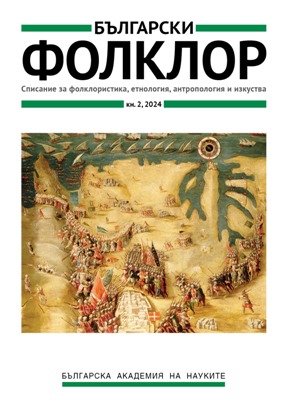
The article summarizes the concepts of historicism of the folklore-poetic works established in our science at the end of the last century. It reviews the recordings and publications of Bulgarian folk songs with the motif "A Virgin Rescues Malta" and examines the research and opinions concerning them. The article also analyses the metadata, associated with the already published versions, throwing more light on the context of their existence at the time of their recording in written form.
More...
The article examines, from a historical and contemporary perspective, the processes of valorizing diaspora gardening as local heritage in two significant "gardener villages": Polikraishte and Draganovo (within the municipality of Gorna Oryahovitsa). Based on field research conducted in Bulgaria and Hungary, the publication investigates how diaspora gardening becomes part of the local festivities and commemorative practices. The article traces how transnational gardening, while practiced as a local livelihood, is connected to traditional festivities and examines the changes in the local dimensions of the festive calendar during socialism and more recently. A separate section is dedicated to the new festivity (its emergence, development, and messages) as a current means of transforming local livelihood into cultural memory and the local heritage of the two settlements.
More...
The present text includes a brief review of the publications and research on the theme of the motherland in Bulgaria and abroad. In the context of the contemporary migration movements some possible aspects and ways of studying motherland concept are also presented. By analyzing the attitudes of the Bulgarian expatriates coming back, the author presents the relation and the images associated with the motherland – i.e. the native home, the coziness of the home, the well-known nature, as well as some fragrances and feelings.
More...
The article examines the question of how the concepts of nature and coexistence 2.0 have been constructed in the web 2.0 space, as well as their importance for conservation policy and decision making regarding human-nature coexistence. The object of analysis is the widely known case of a human-brown bear conflict that occurred near the town of Belitsa, municipality f Razlog, which initiated heated debates in the web 2.0 space in the context of the “innocence” of the brown bear. The analysis of the discussions falls within popular discourse of “re-connection” and “living in harmony” with nature constructed by global environmental agencies, as well as within the novel calls and proposals for coexistence between humans and nature. The article concludes that the construction of nature and coexistence 2.0 appears to serve conservation goals, but foregrounds their paradox of re-connecting with nature yet living at a distance from it.
More...
The article aims at presenting the activities of the people of the municipality of Garmen, Southwest Bulgaria, related to the socialization of tangible immovable religious heritage of local importance and their vision for changing it into a tourist product. There is no specialized local policy regarding cultural heritage, but voluntary initiatives to restore Orthodox sites and the spaces around them involve people of different faiths. As a result of their civic activism, a collective sense of attachment to heritage is strengthened, which in turn becomes an important element of their regional identity. The results of an ethnological study conducted in April–May 2022 in the villages of Garmen, Dabnitsa and Skrebatno are presented. The data were collected through open-ended interviews with representatives of the municipality of Garmen and people who live near the cultural values and are committed to the cause of their restoration and socialization.
More...